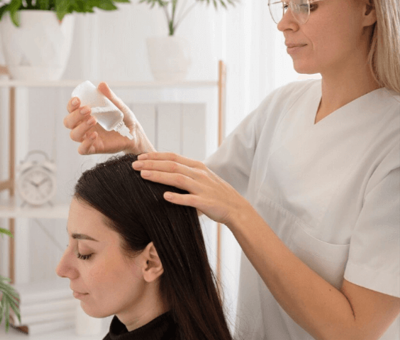Korean aesthetic and dermatology clinics are globally recognized for being at the forefront of regenerative medicine — particularly when it comes to stem cell-based hair restoration therapies. But how exactly do these treatments work, and what makes Korean clinics stand out? Let’s delve into the science behind it.
The Basics: What Are Stem Cells?
Stem cells are unique in that they have the potential to develop into many different types of cells in the body, including those that make up skin, muscles, and even hair follicles. When applied correctly, stem cells can stimulate tissue regeneration, improve cellular turnover, and reawaken dormant hair follicles, making them a powerful tool for treating various forms of hair loss, including androgenetic alopecia (male and female pattern baldness).
Hair Follicles and the Hair Growth Cycle
Hair follicles are tiny but complex structures embedded in the scalp. Each follicle goes through a growth cycle consisting of three main phases:
- Anagen (Growth Phase) – Active hair growth.
- Catagen (Transition Phase) – A brief stage where hair stops growing.
- Telogen (Resting Phase) – Hair sheds and the follicle rests before restarting the cycle.
Hair loss often occurs when follicles enter the telogen phase prematurely or fail to re-enter the anagen phase. Stem cell therapy aims to reactivate these follicles and prolong the growth phase.
How Korean Clinics Apply Stem Cell Therapy for Hair Restoration
South Korea’s advanced medical infrastructure and emphasis on cosmetic innovation have enabled clinics to develop highly effective, minimally invasive treatments using autologous stem cells (harvested from the patient’s own fat or blood) or allogeneic stem cell-derived growth factors (from donor sources).
Key Techniques Used in Korean Clinics:
- ADSC (Adipose-Derived Stem Cells) Therapy
Clinics extract stem cells from a small amount of the patient’s fat tissue, process them to isolate regenerative components, and inject them into the scalp to stimulate dormant follicles. - Stem Cell Conditioned Media Injections
These are nutrient-rich serums containing growth factors and cytokines derived from stem cell cultures. They are often used in conjunction with microneedling or laser therapy to enhance absorption and effectiveness. - Exosome Therapy
A cutting-edge treatment gaining traction in Korea. Exosomes are extracellular vesicles derived from stem cells that carry powerful signaling molecules to repair and regenerate tissue. They’re increasingly used in Korean clinics for non-surgical hair rejuvenation.
Why Korean Clinics Are Leading in Stem Cell Hair Restoration
Several factors contribute to Korea’s leadership in this field:
- Advanced R&D: Korean biotech companies and dermatology research centers actively develop proprietary stem cell lines and delivery systems.
- Customized Treatment Protocols: Clinics personalize treatments based on hair density, type of hair loss, and scalp condition — often combining stem cells with PRP, low-level laser therapy (LLLT), or oral supplements.
- Minimally Invasive and Painless Techniques: Korean clinics focus on delivering natural-looking results with little downtime, appealing to both domestic and international patients.
Is It Safe?
Yes — when performed in licensed, reputable clinics, stem cell therapy is generally safe, with minimal risk of allergic reaction or infection since the cells used are either autologous or thoroughly screened allogeneic derivatives. Most patients experience mild redness or tingling after the procedure, which subsides within hours to a day.



